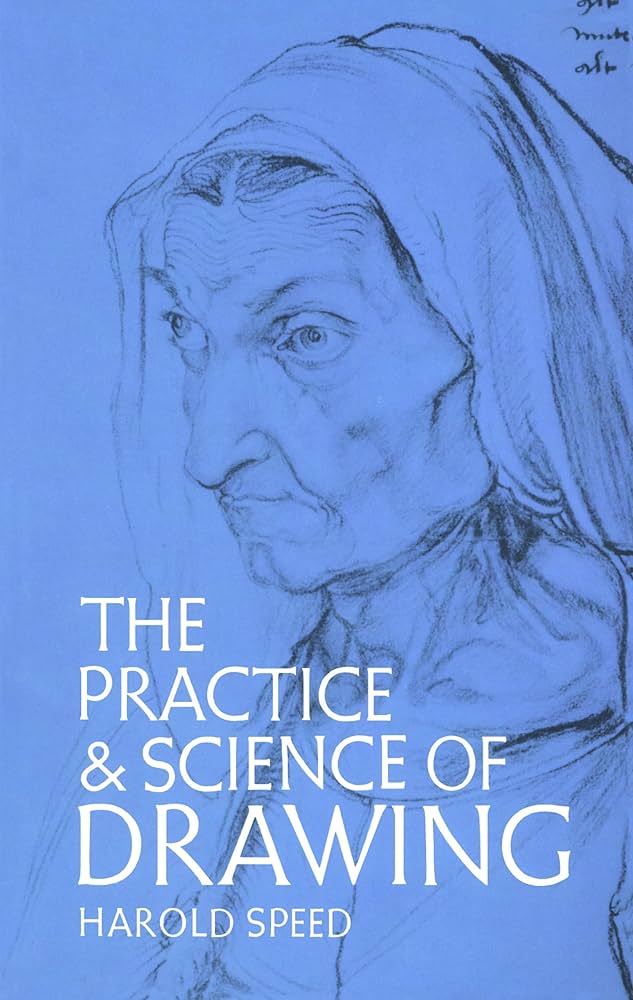
This is a continuation of the Series on Harold Speed’s book The Practice and Science of Drawing, published in 1913. Click Here for Part 1 of the series.
Chapter IV – The Academic and Conventional
In chapter IV, Speed goes through the state of current affairs (in 1913) in artistic schools that he was witness to. Students were subjected to copying and instructors were concerned about strict adherence to rules. Rules regarding all that had been learned regarding art, whether it was composition, proportion, perspective, color, etc. Students would get so caught up in the technical aspects, copying verbatim what they saw without any artistic interpretation.
Speed regularly argues for the expression of the artist throughout the different chapters, but here he really goes into the idea that artists are being turned out as academic artists, rather than being introduced to the feeling and expression art has to offer. Now, since this book was written, I would argue that art and artists have done a complete 180° turn from his ideas, and art has become an expression of itself rather than of the world around us. However, Speed in this chapter was wholeheartedly advocating for more feeling in art.
“There is more expression of life in a few lines scribbled on a paper by a good artist than in all the reality of the popular show.”
– Harold Speed. The Science and Practice of Drawing
From this point of view, the importance of feeling in art is at its core. Many of us have seen the “hyper-realism” drawings and paintings that attempt to recreate life-like scenes or portraits. These pieces are technically impressive and inspiring, but they lack something that the impressionist, abstract, or even the eye-catching Dali or Botero paintings have. Expression and interpretation is at the core of art. It is a communication of a feeling from the artist to the viewer of something they experienced or want the viewer to experience.
Chapter VII – The Study of Drawing
In this chapter, Speed starts to give a little bit of instruction guiding the reader about how they should approach drawing as a student. Referencing the previous chapters on line and mass drawing, he states that an artist must be well-rounded in both methods to be successful. Overall, Speed suggests that the student and amateur artist work both the mass study and line study of figures and little by little, they will improve at each of them and be able to shape and mass figures with ease and precision.
Chapter VIII – Line Drawing – Practical
The tips and tricks of scaling from real life are given time and time again in drawing instruction books. However, a cute detail of Speed’s description involves the usage of a knitting needle as the method of scaling. Using the knitting needle as other instructors have said to use the thumb, or the pencil, you can use it in the same way. Extending your arm straight out, you can easily scale and proportion objects based on base measurements taken with your knitting needle. A common scale to use is the head, or the torso, etc. Mark its size between the tip of your needle and your thumb and move that around the rest of the subject to see how the proportions relate to one another. How many heads is the body? How many heads wide is the torso?
Speed advocates for setting up what he calls a “scaffolding” around the subject. A kind of rigid straight line framework that outlines the subject and then can be worked within in a more fluid and delicate way that evokes more emotion. Introducing more line drawing techniques towards the end of the chapter, an interesting comment he makes is that lines drawn across the object suggest softness, while lines down the object suggest rigidity.
An important aspect that students should consider is the very practice of drawing is the act of converting a three-dimensional object into a two-dimensional representation. Therefore, it is crucial that the visual acuity of the artist be ready and willing to learn how to see objects as the “are” rather than representations. This can be seen clearly from the children’s drawings mentioned in Part 1 and earlier chapters of this book.
Again, Speed goes back to his expression of feeling when drawing subjects.
“Form to be expressed must first be appreciated”
-Harold Speed. The Practice and Science of Drawing
Chapter XI – Mass Drawing – Practical
In this chapter, Speed breaks down drawing into essentially blobs of tone. He breaks it down simply: light, mid, and dark tones. These tones make up every drawing on a 2D plane, and it is the artist’s duty to block them in accordingly. He goes into a detailed explanation of how to apply the paint of the mid tone first, scumbling the paint all over the canvass thin enough to leave the under drawing visible. Then, insert the light tones, and then the dark ones. The mid tones can then be touched up and used to correct any mistaken shapes and the process can be repeated with refining the edges of the masses until the painting is complete. One thing is certain, though, without a good basis of line drawing and being able to properly proportion a subject, it is useless to attempt with any fervor the accurate representation of a subject in the method of mass drawing or painting.